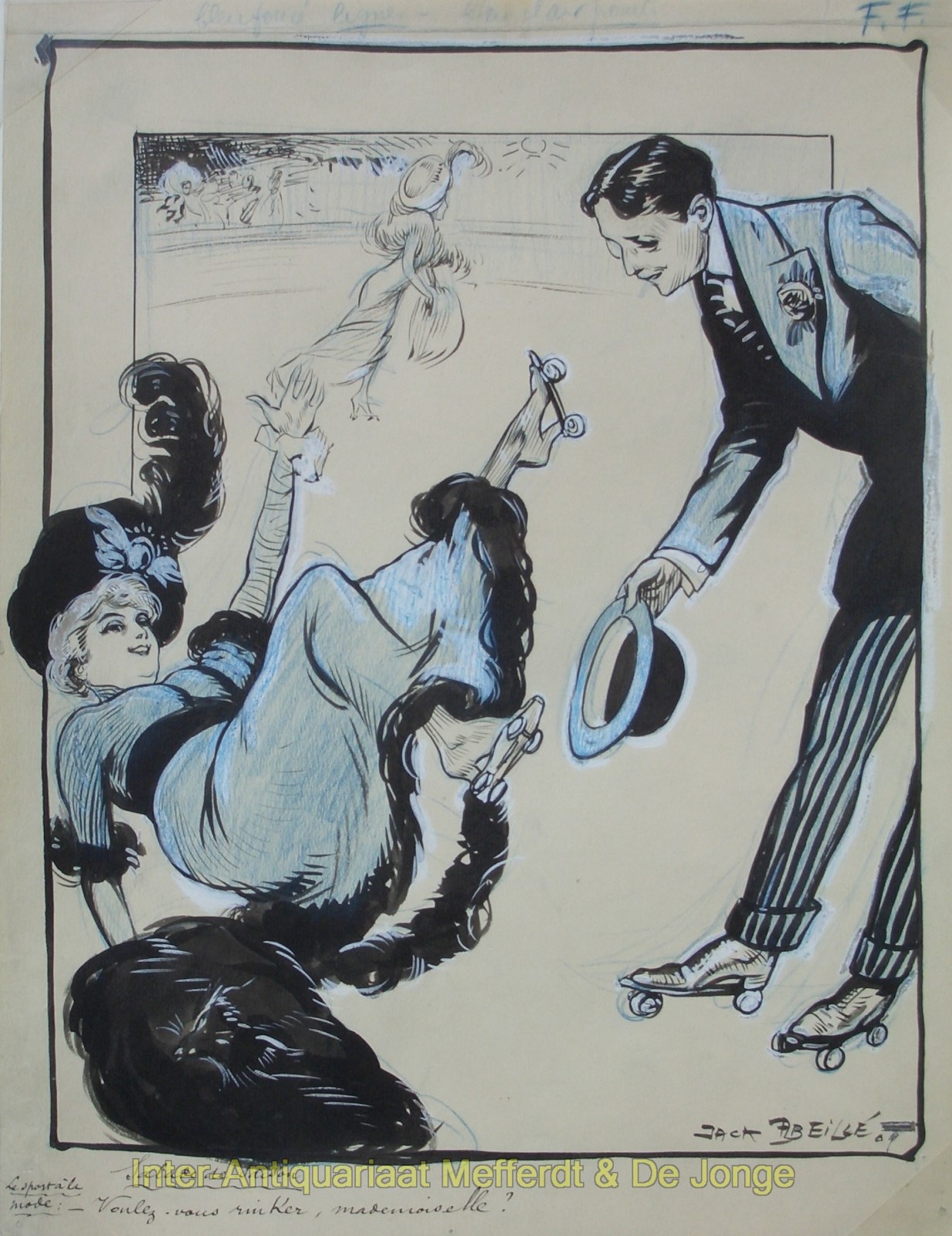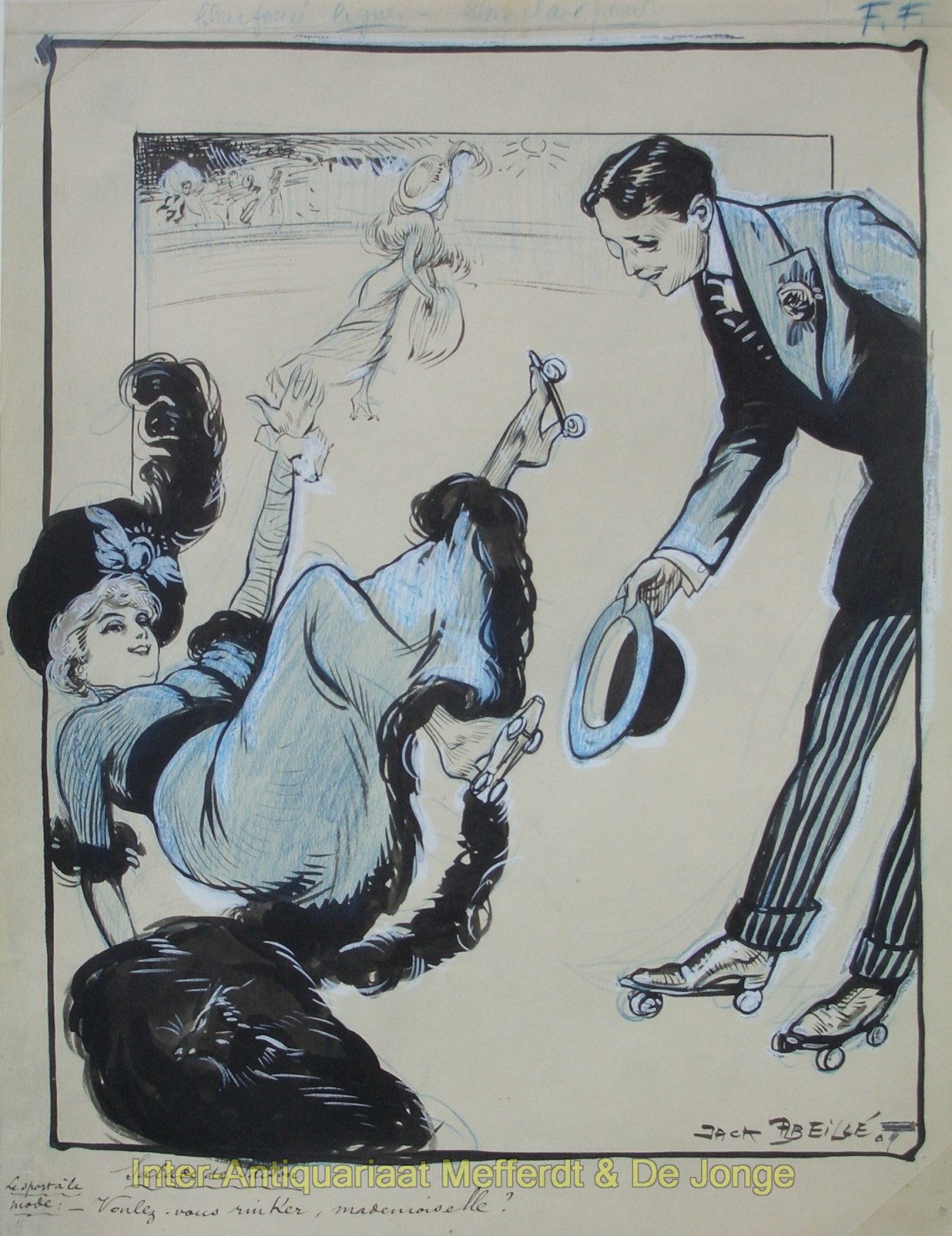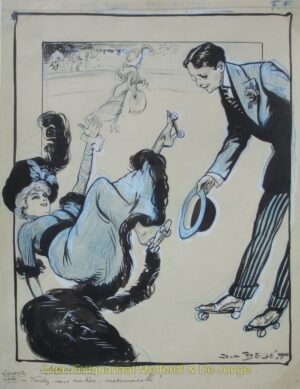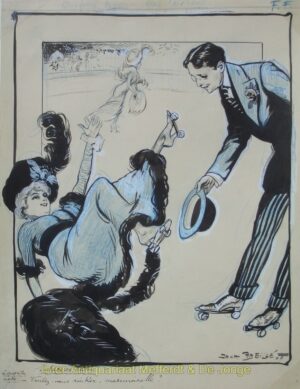Patinage à roulettes, roller skating – Jack Abeillé, 1909
“Salade de Saison / Le sport à la mode” [the fashion of today/the trend in sports], drawing with pen and washed ink, coloured chalk and covering white by Jack Abeillé (1873 -?). Signed and dated (19)09 in the lower right. Size approx. 32.5 x 24 cm.
In 1863 the American James Leonard Plimpton introduced a roller skate with two wooden wheels at the front and two wooden wheels with a rubber spring construction at the back. Unlike previous in-line roller skates, you could make beautiful truns with it. In 1873 a German company introduced roller skates with hard rubber wheels and a lever for securing the shoe. Perfection of the roller skate took place in 1884 when ball bearings were put in the wheels and from 1890 there are roller skates with adjustable length.
After the invention of Plimpton, roller skating rinks were built everywhere. It became a craze, a social meeting place where sometimes thousands of roller skaters were active. On the opening night of The Chicago Coliseum, there were more than 7,000 people.
Roller skating remained a popular pastime until the First World War. After the war, the emergence of film, dance halls and the automobile made roller skating went out of fashion. But during the Depression of the 1930s roller skating became popular again, it is a relatively cheap leisure activity that allows the misery of the time to be forgotten for a while.
Provenance: from the collection of Charlotte von Prybram-Gladona (1910-2002).
Price: SOLD





